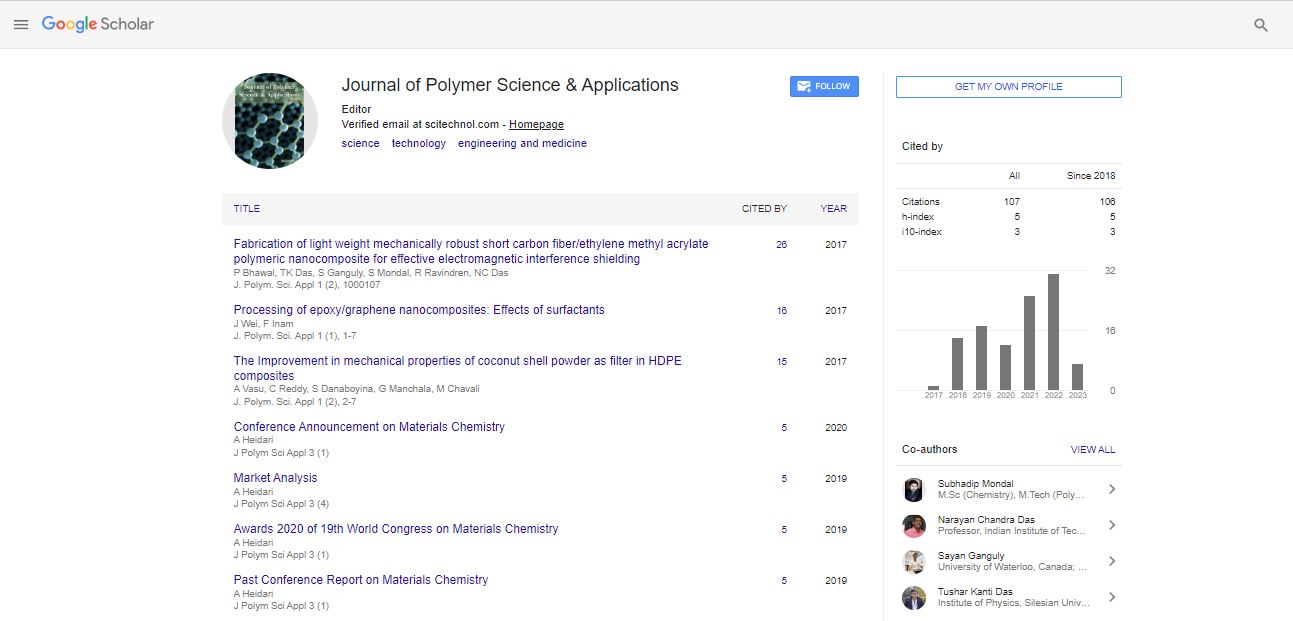Surface modification of polyester via soil release polymers for cleaning enhancement
Alessandra Valentini,Melanie M Britton, Eric Robles and Anju Brooker
University of Birmingham, UK
Procter & Gamble Technical Centre Ltd, UK
: J Polym Sci Appl
Abstract
Anti-fouling coatings find several applications in biomedicine, water treatment and material science, preventing microorganism’s attachment to the surface and biofilm development. Different strategies have been adopted to release anti-fouling properties on substrate and they are based on chemical and physical methods. Among the chemical methods, the use of soil release polymers (SRP) to modify hydrophobic textile surfaces (e.g. polyester) is gaining interests. In fact, hydrophobic soil adhesion is enhanced on hydrophobic fabrics, which are more difficult to clean as a consequence. SRP deposition on fabric surface leads to an increase of fabric surface energy, delivering soil release benefits. In this work, the deposition of a range of SRPs on polyester and the influence of deposition parameters, such as agitation, pH and SRP concentration, have been investigated. Streaming potential measurements have been used to assess changes in surface charge due to SRP deposition. The remaining concentration of each SRP in solution, after the deposition, has been assessed via UV/vis spectroscopy, leading to the determination of adsorption isotherms for the polymers. The observed changes in streaming potential were found to depend strongly on the polymer’s charge and on the concentration of SRP deposited. Moreover, the importance of SRP charge for determining its affinity with polyester was highlighted. Benefits on soil removal were identified when SRPs coating has been effectively deposited. Fabric surface characterization has also focused on identifying changes in porosity, roughness and wettability due to SRPs deposition via SEM, BET and contact angle measurement.
Biography
Alessandra Valentini is pursuing her PhD in Chemical Engineering at the University of Birmingham. She is part of a Marie Curie-Sklodowska ITN project called Bioclean, which aims to achieve deep down and long lasting clean surfaces via surface modification and photocatalytic approaches. She has completed her Master’s in Analytical Chemistry at the University of Bari (Italy). In her Master’s thesis, she developed a new UHPLC-ESI-MSMS approach to characterize the composition of free fatty acids in mussels and how this could be affected by thermal treatments. She has six months experience with the use of plasma etching treatments for silica biosensor applications.
E-mail: valentini.a.1@pg.com
 Spanish
Spanish  Chinese
Chinese  Russian
Russian  German
German  French
French  Japanese
Japanese  Portuguese
Portuguese  Hindi
Hindi 